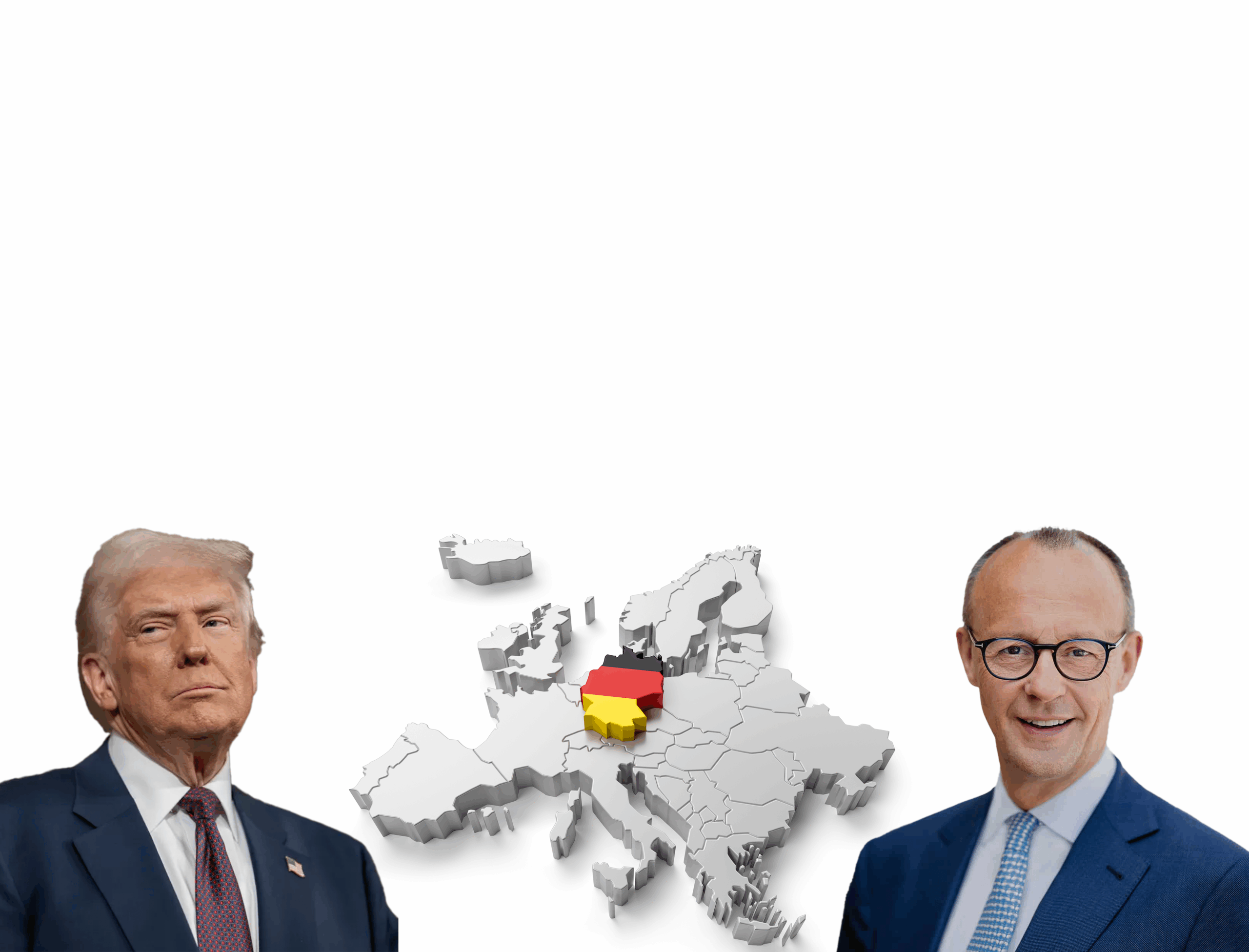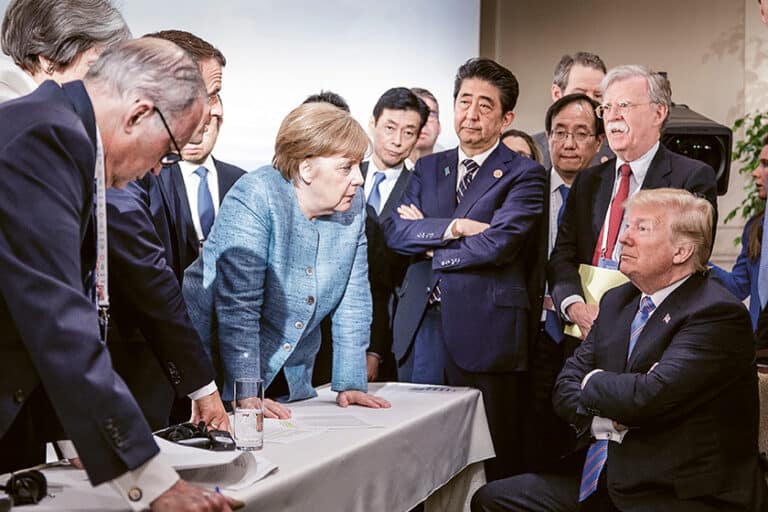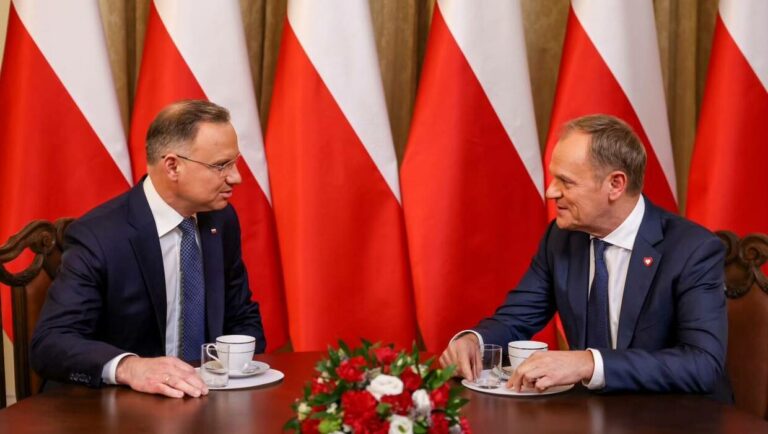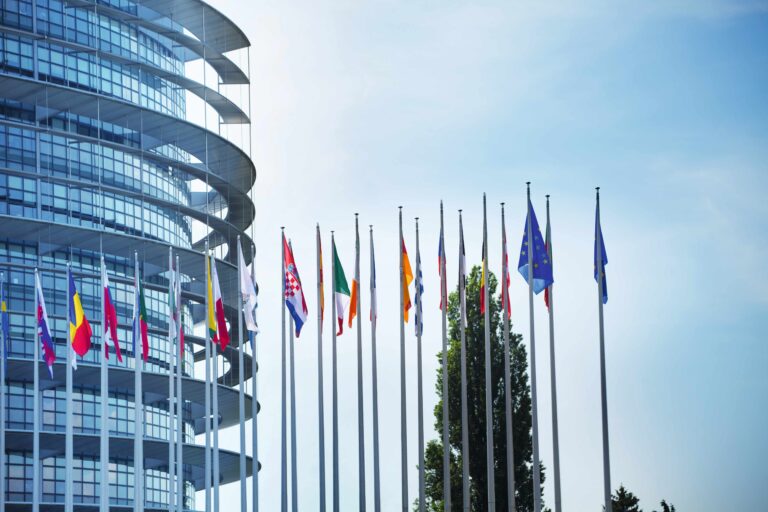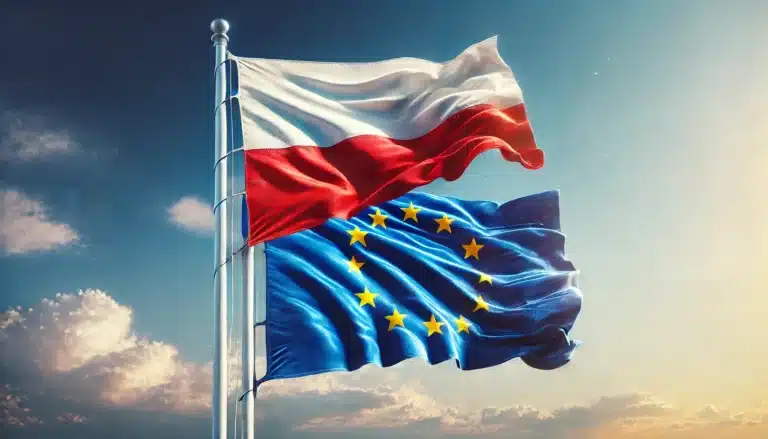European problem with Germany
It seems that the Americans have made their choice. As they reduce their presence in Europe, their place will mainly be taken by Germany.
So the less America in Europe, the more Germany in Europe.
The Americans are now dealing cards to Germany, which Germany will play across Europe. But also in a way that the Americans maintain control over it and draw revenues.
The new Chancellor Friedrich Merz has just invited President Trump to Germany. The visit is expected to bring a fundamental political breakthrough in US-Federal Republic of Germany relations, which were disastrous under the previous government coalition. There were even public rebukes by Elon Musk directed at the German government in an extremely offensive manner. President Trump never distanced himself from these rebukes and even praised Musk.
Now it is to be different. Trump’s visit is planned to be historic with special ceremonial arrangements. It is meant to emphasize, among other things, the German roots of the current US president. A small wine village, Kallstadt in western Germany’s Palatinate, from where Donald Trump’s grandfather emigrated to the US, is also preparing for the visit.
In this context, new cooperation projects in the defense industry and beyond are significant. In January 2024, the creation of a joint venture between Raytheon and MBDA Deutschland in Germany was announced, which is to produce initially about 1,000 Patriot PAC-2 GEM-T anti-aircraft missiles. Production infrastructure is being built and technology transfer is underway. The value of this project alone is about 5.5 billion dollars. The project is to be further developed in light of growing demand for new Patriot systems following experiences from the war in Ukraine. The Patriot is effectively the only system available to European countries capable of destroying ballistic missiles such as the Russian Oresnik. This agreement fits into the German initiative ESSI (European Sky Shield Initiative), which aims to create a joint air defense system within NATO under German leadership.
Cooperation between defense industries has roots in the Cold War era but is now being intensively restored. Germany acquires American technologies that the Americans consistently refuse to provide to other allies, for example Poland. We received a cold shower from the Americans already under President Biden. This perspective has not changed even under Donald Trump’s presidency, although he reversed Biden’s decisions regarding all affected countries (Poland was not specially distinguished in this regard).
The most recent example from a few days ago is the joint Lockheed Martin Co. and German Rheinmetal project to produce and develop rocket missiles for the US HIMARS systems worth over 10 billion dollars. Poland had been striving for years to produce these missiles domestically. The Americans chose Germany. Thus, we will have to buy significant amounts of expensive rockets for our 500 ordered HIMARS launchers from Germany—unless our and Korean engineers adapt the Korean rockets from Chunmoo launchers, of which Poland ordered 218, to fire from HIMARS. We have just signed an agreement on their production and development in Poland between the WB Group and the Korean Hanwha corporation.
Germany purchased 35 F-35 aircraft, also from Lockheed Martin Co., as carriers of nuclear bombs available under NATO Nuclear Sharing. As part of the offset, they negotiated, among other things, the establishment of a new Lockheed aviation factory on their soil. Poland bought a similar number of F-35s but negotiated no such offset. It has now been announced that more and more parts of this aircraft will be produced there.
Germany, through the voice of its new Foreign Minister Johann Wadephul, has already declared defense spending above 5%, which the Americans demand from all NATO members, although most resist. The compromise option of 3.5% prevails. Wadephul proposes a compromise to add 1.5% spending on pro-defense infrastructure to that 3.5%. Either way, Germany sets an example for others and assumes the role of European leader with American support. They have declared the creation of the largest and best-armed German army in Europe of over 400,000, largely conscripted. This is to be announced at the upcoming NATO summit in The Hague. Germany is to be the main force defending Europe and deterring Russia.
Strengths and Weaknesses of Germany
Germany has accumulated wealth over many generations, while we have only been growing richer for one generation. Germany aspires to membership in the UN Security Council and is an undisputed leader in aid to poor countries of the global South. It has a reputation there as a wealthy but open country to migrants. Illegal migrants stopped at EU borders almost always name Germany as their travel destination.In pre-war times, military strength gained key importance. Germany wants to have at least a 400,000-strong army mainly equipped by its own industry. Germany has never neglected its defense industry, unlike Poland. While Poland kept its defense industry in a state of permanent stagnation, Germany—although its army reduced purchases and, taking advantage of the post-Cold War dividend, limited size and disposed of equipment (thus we came to possess about 250 Leopard tanks almost for free)—never neglected research and development work and modernization of weapon systems. German companies participated in nearly all international joint weapon development and production projects within NATO, the EU, and bilaterally—for example, American Abrams tanks originate from a US-German joint project and share many features with German Leopard 2 tanks. As a result, Germany became the fourth-largest arms exporter in the world. Weapons that their own army did not want to buy. Poland followed this path only with the WB Group. It developed and produced, e.g., drones for over a decade, almost exclusively for export. It became a large corporation and now, as our army finally woke up after the experience of Ukraine, it can supply it with weapons.
For years I have been calling to treat our defense industry as a motor not only for the entire industry but also for the whole economy. Germany, after years of economic slowdown, decided to do this at home. They have the best technologies in the world, existing plants, educated staff, and a growing sales market in Europe and worldwide, which has started arming massively. We have most of these advantages, we lack technology, but we do almost nothing. Technologies can be acquired via offsets, but we do not use offsets. We could also follow the German path and engage in international projects—we do not do that either. Recently the government refused capital and technology participation in Airbus, earlier buying CAMM missiles from MBDA.
We sold an excellent factory in Świdnik to the Italian Leonardo, as well as PZL Mielec first to the American Sikorsky and now to Lockheed Martin Co.—practically without any benefits for the economy. Now PZL Mielec could produce together with Lockheed and develop Korean FA-50 planes, and later F-21 stealth. Koreans are pushing for this because the demand for FA-50 alone is estimated at 2,000 units in EMEA markets. Now Germany is betting on armaments. The Czechs do it successfully. We do not.In a recent exposé, the new Chancellor Merz, in view of progressive population aging, announced the continuation of the policy of openness to immigrant absorption, but also closing Germany to illegal migration. Officially, the German government positively assesses immigrant assimilation processes, considering that the vast majority are integrated by German society. This is differently assessed by a significant part of German society. They are fed up with the falsification of reality by sometimes intrusive political correctness propaganda, promoted inclusiveness, and affirmation of minorities. The result is the growth of support for radically right-wing groups, including AfD, which is already the strongest opposition party in all of Germany and dominates eastern Germany.
What strongly weakens Germany is the well-known phenomenon from the former GDR and the PRL of political schizophrenia. What official propaganda says is one thing; what is said in families is another. When we think of the GDR or PRL times, of widespread propaganda indoctrination, distortion of history, or imposed worldviews, we realize what collective memory stored in families is. It is the main part of the lasting national identity legacy. Not only positive but also various national demons and specters sometimes manifesting as extremism, nationalism, or xenophobia.
For our nation, it allowed the restoration of true native values that unite us almost immediately after regaining sovereignty after 1990. With the return of sovereignty, entrenched stereotypes and prejudices, especially against our neighbors, returned. All the many years of efforts by communist rulers in Poland to divide Germans into “good” from the GDR and “bad” from the FRG or to build Polish-Soviet (i.e., Polish-Russian) friendship were in vain. In Germany’s case, due to the Nazi past, it took another form. A schizophrenia of political correctness appeared. I experienced it myself, living and working among Germans for about a year. Mostly they were educated representatives of the middle class from the Rhineland. Upon closer acquaintance, it turned out what they really think, and it is very far from official propaganda. It was not only immigration problems but also more general issues, such as the feeling of constant lack of German sovereignty limited by the constitution (Grundgesetz), democratic but in fact written and imposed by American occupying authorities, whose troops still station in the same bases as in post-war occupation times. I was there during what seemed to be the end of the Cold War and was asked why the Americans still “occupy” Germany. Now, after the outbreak of the war in Ukraine, this perspective has changed, but resentment remains.
Not only AfD supporters commonly “disown” the image of their country as a criminal state. The same German syndrome returns as before World War II, when Germany massively rejected its guilt for starting World War I and the Versailles “dictate.” They pointed out that the Entente powers were at least equally guilty and that the imposed reparations were unlawful. Promoting such theses paved Hitler’s way to power.
The latest study of historical awareness among German youth shows that Poland is responsible for causing World War II, not Germany. The painful consequences of the lost war are unjust to Germany. Thus, years of work by Polish-German textbook commissions were in vain. German youth repeats what they heard at home, and their parents increasingly vote for AfD because it has in its program what they really want. Some of AfD’s demands have been tactically withdrawn (such as the demand for revision of the German-Polish border), but they have not been forgotten.
France’s Rivalry with Germany
After the UK’s exit from the EU, the only competitor for leadership in Europe for Germany remained France. Although many treaties aim to weaken the centuries-old hostility between these great nations, which ensured peace and development in Europe. The European Union (and earlier the European Coal and Steel Community and Western European Union) was created to remove the threat of war and initiate peaceful cooperation between the German and French peoples. What is forgotten in Europe today is the cornerstone on which the Union is built. Both countries are part of NATO (France with limitations as it does not participate in the joint nuclear policy), and they are also linked by a separate alliance—the 1963 Élysée Treaty, which is the basis of close cooperation to replace hostility with friendship. The treaty from the start was future-oriented and prioritized youth education. We have no such treaty with Germany. If we had, the results of German youth’s historical knowledge and lack of empathy for the suffering of the Polish nation during World War II would probably not be as they are. There is no treaty also because Germany would have to face settlements for the annihilation of over 6 million Polish citizens and the destruction of Poland. They already know that Poles will not forgive them, and the lack of a legal basis for settlements fabricated by Germany does not mean a lack of responsibility arising from conscience. Resentments still exist in the awareness of both nations. It should be noted here that President de Gaulle did not trust either the Americans or the Germans. The Force de Frappe (Deterrent Force) built in his time was to deter Russia (then the Warsaw Pact), but the French developed it autonomously from the US and NATO because they saw divergent interests that at a critical moment could cause France to be left at the mercy of fate, as for example the US might not risk global war.
This also applies to Germany, whose development, as history teaches, can also be very unfavorable. De Gaulle knew that building friendship with Germany had to be accompanied by strength. At the same time, he signed the Élysée Treaty with Germany and built his own national nuclear forces. France has about 290 nuclear warheads on mobile launchers (planes, ships) and abandoned silo missile launchers on the Central Plateau. Therefore, they are impossible to be completely destroyed. This number of warheads seems small compared to over 5,800 Russian and over 5,200 American, but it must be taken into account that almost the entire population, industrial, and military potential of Russia is concentrated in its European part. That area is comparable to France. And this causes that 290 warheads are sufficient.As history of diplomacy teaches, France consistently builds its position in Europe in opposition and in relation to Germany, which for centuries has been richer, more populous, and stronger than France. It skillfully built networks of alliances that neutralized this advantage. Especially important was the alliance with the United Kingdom. France now returns to its roots and, seeing Germany’s growing position, wants to include Poland in its security architecture. The new French-Polish treaty of friendship and cooperation is based on the Élysée Treaty model but has an additional defense dimension due to the direct war threats currently in Europe and changes in the strategic situation. Europe will no longer be able to count on US help to the extent it did in the past. With the US withdrawal from Europe, Germany’s role will increase, with all the negative consequences for France but also, for example, Poland.
A problem was and remains the effectiveness of the American nuclear umbrella in the context of possible use of tactical nuclear warheads by Russia. The US has global interests, and use of nuclear weapons by them may not be obvious. Poland perceives this problem. It is not about the use of atomic bombs but about effective deterrence, which is progressively becoming less effective with the US.
From Poland’s point of view, the core of the treaty is military deterrence, including nuclear. The treaty is progress but has serious limitations. France and Poland committed to mutual military assistance on a basis exceeding Article 5 of the Washington Treaty on NATO’s creation. Currently, the type and scale of assistance are decided separately by member states. Military assistance is therefore not certain. The new French-Polish treaty provides for military assistance. However, the use of nuclear weapons remains in the hands of the French president. France does not possess tactical nuclear warheads, so it cannot provide them to Poland. The treaty also does not treat Polish territory like French territory. Therefore, the French president is not legally obliged to defend Poland after a Russian nuclear attack. In addition, France is tied by the NATO-Russia Founding Act, which prohibits any NATO nuclear installations in Poland. Even more so since the US does not want to repeal but rather reactivate it. The US has just expressed a willingness to reactivate the NATO-Russia Council.

